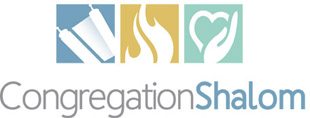Future Sabbatical Plans
June 2022 Keeping Connected
Dear Friends,
I wanted to write to let you all know about my future sabbatical plans. For those of you are new to the community, the roots of the Sabbath and sabbatical are ancient and rooted in the Torah. Shabbat is a central sign of the covenant between God and the Jewish people. In Bereshit we learn that after the completing all the work of creation God “shavat” – God rested – and in Exodus 31 we learn that not only did God rest but also God “vayinafash” – God was refreshed. The Hebrew literally means “re-souled”! These two passages teach us a profound message; even God needed to rest and become renewed. In Parashat Behar – Leviticus 25 – this vision is further expanded with the communication from God to our ancestors about the laws of the sabbatical year. The text reads, “The Lord spoke to Moses on Mount Sinai: Speak to the Israelite people and say to them: When you enter the land that I give you, the land shall observe a Sabbath of the lord. Six years you may sow your field and six years you may prune your vineyard and gather in the yield. But in the seventh year the land shall have a Sabbath of complete rest, a Sabbath of the Lord: you shall not sow your field or prune your vineyard. You shall not reap the after growth of your harvest or gather the grapes of your untrimmed vines; it shall be a year of complete rest for the land.” God understands that not only does the land need to rest to remain productive and healthy, but also that for that one-year it needs to be renewed and re-claim the nutrients from its own produce.
In time the wisdom of the Sabbath and of the sabbatical year was embraced in broader communities. Academia has been on the forefront of making sabbaticals a part of their faculty’s career paths. For them it is a time of study, rest, research, writing and travel. It broadens their life experiences and helps them to become better teachers. For clergy, the time of sabbatical is more personally defined. Some clergy go into retreat and spend the time in prayer and meditation. Some clergy go to university and study. Some pursue independent research and writing and others travel to places of religious and historical interest. I am deeply grateful that the Congregation Shalom community has supported me in integrating the possibility of sabbatical into my work.
I took my first sabbatical in 2006. For our newer members you might be interested in knowing what I did during that time. My family and I lived in Florence, Italy for 4 months and I served a small Reform congregation that could not afford a rabbi. During that time I helped them with strategic planning in addition to leading services, adult education and more. I also had the opportunity to study about Italian Jewish history and visit many Jewish sights in the country. It was an amazing experience and it enhanced my understanding of Jewish life in Europe from a historical as well as a contemporary perspective. I also felt that I was able to make a difference in the life of a small underserved Jewish community.
Eight years later, I took a second sabbatical. Although I had a long list of goals, both professional and spiritual, life took a different turn than I had expected or hoped. My mom was diagnosed with melanoma right before the sabbatical began. I was her prime support in getting all the medical care she needed, finding an independent living community and helping to move my parents from their home of 50 years. In the middle of these responsibilities I had minor surgery myself. Between recovering from the surgery and helping my folks, I would not say that I was able pursue most of my sabbatical goals. I will say, however, that I am profoundly grateful for that time which gave me the opportunity to help my parents through this incredibly difficult transition and the time with my mom was a blessing. Life presents to us many challenges and in a mysterious way the sabbatical came at the right time. I now have a deeper understanding of how important it is that people can access Family and Medical leave when they need it.
Based on the sabbatical cycle, I would have been on a four-month sabbatical this year. Because of the impacts of Covid, I did not feel, however, that this was a good year to be away. My current plan, after working with the Board of Trustees, is to divide the four-month sabbatical over two years. I will be away next winter for two months and then the following year for two months. Given the complicated nature of synagogue life at this point and having an elderly dad, I think the split in 2-month segments will be best for everyone. At this point, I do not know the details of where I will be or what I am doing, but I will be sure to fill you in as soon as I know. As in years past I will have a set of staff, volunteers and supports in place to help while I am away. I will fill you in on those details by the end of the summer.
Most of all I would like to say thank you to the community for your support during this time of sabbatical.
Warm regards,
Rabbi Shoshana M. Perry
